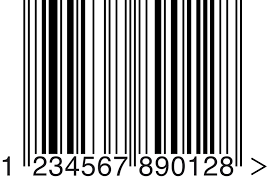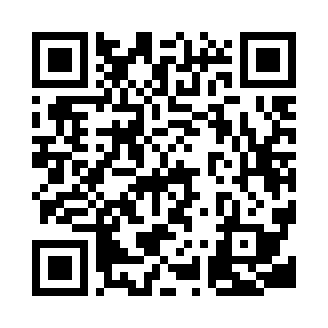QR Codes vs. Barcodes in Inventory Tracking
The simple, one-dimensional barcode has proven a reliable tool in helping to organize inventories for decades. Thanks to key advantages, however, QR codes are becoming the new industry standard in inventory tracking.

What is a Barcode?
Barcodes are simple, one-dimensional visual representations of data in a machine-readable form. They consist of vertical black bars on a white background and often also include numbers that designate a corresponding human-readable form of the code. When a machine scans the barcode, its code is fed into a computer system that associates it with a numeric code, usually a Stock Keeping Unit (SKU) number.
Barcodes have been around for decades, gaining particular popularity at the turn of the century. They are widely used in all sorts of scenarios for tracking purposes, both in manufacturing, distribution, logistics, and point-of-sale settings. One-dimensional barcodes can convey small amounts of information, usually up to 25 characters.
One-dimensional barcodes are still relevant in many use cases where conveying small pieces of information like the SKU number or the price of the item is enough. Newer, two-dimensional barcode technologies, however, bring key advantages that are making traditional barcodes redundant in an increasing number of applications.

What is a QR code?
A QR (Quick Response) code, also known as a 2D barcode, is an evolution of the traditional barcode that typically consists of black squares and dots on a white background, although they can also be colored. This creates a two-dimensional machine-readable array of symbols that can be scanned with a dedicated scanner or a smartphone camera connected to a QR-reader app.
As QR codes contain information both in the vertical and horizontal dimensions, they can accommodate vastly more information than regular barcodes. A single QR code can represent more than 1,500 alphanumeric characters – around 60 times more than its predecessor. The larger data storage capacity gives QR codes a substantial advantage over traditional barcodes wherever more information needs to be included in the code.
QR codes are seeing more and more use in inventory and supply chain tracking applications and are becoming the go-to implementation in warehouse management software. In all likelihood, however, traditional barcodes will still be around in point-of-sale applications for years to come.

Benefits of barcodes and QR codes in inventory management
Digital inventory tracking offers many benefits in the realm of inventory management and manufacturing management. As labels can be used to mark everything from materials, WIP, and finished goods to storage locations, equipment, and manufacturing orders, they help bring visibility into processes throughout your operations. Here are some of the direct benefits you can reap by implementing a barcode or QR code inventory system:
Reduced paperwork
Barcodes and QR codes eliminate the physical paper trail and introduce a digital one. This automates many clerical tasks and makes keeping records and finding the correct documents much easier and less time-consuming.
Reduced human errors
A scanner cannot miss a number or a part of a code like humans very well can. Consistently using a scanner to record inventory movements reduces record-keeping errors by a very large margin. Additionally, a properly implemented barcode system helps avoid picking and dispatching mix-ups.
Increased productivity
Scanning a barcode or QR code is instantaneous and makes the reception, picking, and dispatch of goods much quicker than when using manual records. Additionally, using them on manufacturing orders can provide workers with quick access to their tasks and instructions. This all can lead to noticeable increases in worker productivity.
Improved traceability
Using a lot tracking and traceability software is essential for ensuring end-to-end visibility in many manufacturing or distributing companies. Stock lot numbers assigned to batches of goods allow you to track individual parts of those lots, trace product nonconformity back to certain batches, and easily organize product callbacks when nonconformity is detected in a stock lot. Expiry date tracking helps you avoid expired goods from ending up in production or in the hands of customers.
Read more about How to Achieve Traceability in Manufacturing.
Reduced inventory costs
By eliminating the need to perform manual data-entry tasks as well as much of the search time spent locating items, a barcode or QR code system helps reduce inventory labor costs. Better tracking and analysis of stock, however, allows companies to optimize their inventory levels, avoid dead stock, and reduce inventory holding costs as a consequence.
Data-driven decision-making
Having a real-time overview of stock movements and the capacity to analyze your inventory processes gives you the opportunity to gradually improve the way things are handled. Thanks to the data accumulated by using a barcode system, you can determine which goods are more important to the business, where they should be physically located in the stockroom, etc. Not to mention that you would have accurate information about inventory levels and requirements.
Learn also about ABC Analysis (80/20 Rule) in Inventory Management.
When is it better to use QR codes?
Regular barcodes do offer all of the aforementioned benefits, but there is only one instance when implementing barcodes over QR codes is justified. That is when you already have designated barcode scanners at your disposal. However, if you plan to use a smartphone or a tablet as the scanner, it would be better to pick QR codes. Here are some situations where QR codes beat barcodes any hour of the day:
1. Items that are small in size
QR codes can fit much more information to a much smaller surface than regular barcodes can. That is why QR codes should be preferred over barcodes when tracking small items or items with little surface space available for labeling.
2. Label wear and tear
Handling items can easily damage or stain labels attached to them. The smallest smudge can make a regular barcode unintelligible to scanners, not to mention when a piece of the label is torn. QR codes are much more damage-proof in that way. Even when more than a quarter of a QR code is gone, the label may still be scannable.
3. Scanning with a smart device
If you use a smart device to scan regular barcodes, you will need to have a high-quality label printer and excellent lighting in the facility. QR codes are much less needy and can be easily scanned with tablets and smartphones.
4. Scanning from difficult angles
Barcodes can only be scanned horizontally, from a limited amount of angles. The scanner laser must extend over the whole length of the barcode. QR codes have much more flexibility when it comes to scanning them from different angles.
When deciding to use either QR codes or barcodes, it would be wise to look at the bigger picture behind inventory tracking. The barcoding solution you use should integrate with your inventory management software and your POS system, but the best solution would be a business management software that already has an integrated barcode or QR code module.
Key takeaways
- 1D barcodes consist of varied-width vertical lines on a white background. These are used to convey a small amount of information like the SKU code and the price of an item.
- QR codes (also known as 2D barcodes) are two-dimensional codes that typically consist of black squares and dots placed vertically and horizontally on a light background. These codes can be used to convey much more information than regular barcodes.
- Using barcodes or QR codes as an inventory management tool helps companies digitalize and automate their paperwork, reduce human errors, increase productivity, improve traceability, and generate data for better and more informed decision-making.
- Even though barcodes usually do the trick when it comes to managing the inventory of a small business, QR codes are much more reliable and foolproof.
- QR codes are great for smaller items and difficult scanning angles. They are also more failsafe when it comes to staining, tears, or other damage.
You may also like: How to Implement a Barcode Inventory System.




